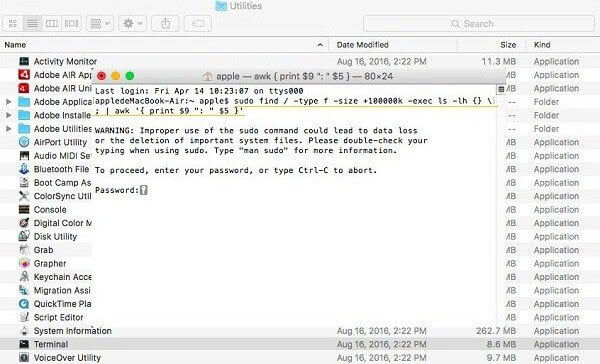
You’ll now be able to save large files with no problem. Format the disk using the exFAT file-system.Go to your drive options (in Mac this is the Disk Utility and in Windows this is Disk Management). DaisyDisk is an invaluable free disk storage management tool for Macs which clearly shows which files are occupying space on your Macs hard drive.Insert the USB stick into your PC or Mac.The following methods should always work as stat is part of the c runtime library on Windows, Mac and Linux. Note that in the instructions below I recommend using the exFAT file-system as this is the most widely supported file-system that supports large files at this time (NTFS isn’t as widely supported): Specifically, if an already opened file is used and the size needs to be worked out on that and it happens to be opened as a text file, then its going to give out wrong answers. Before following the instructions below be aware that your existing files on the USB drive will likely be erased during the formatting.
The trick to storing large files on a flash-drive is to format the drive using a file-system that accepts large files.
#How can i find large files on mac how to
How to store files larger than 4GB on a USB Drive
#How can i find large files on mac rar
In the pop-up window, you can select a path to extract the RAR to. Locate your RAR file in File Explorer and right-click on it, select 7-Zip and Click Extract files. The problem with older FAT versions however is that the maximum single file-size is 4GB or lower (depending on the version of FAT used). Go to 7-Zip official download site to download the compatible version of 7-Zip software on your Windows 10 computer. The reason that USB flash-drives are typically formatted using one of these FAT file-systems is that the format is widely supported and robust (PC, Mac and Linux all support FAT).

There are numerous variants of the FAT file-systems from the past including FAT, FAT12, FAT16, FAT16B and FAT32. Usually, flash drives are pre-formatted using an older FAT file-system version. Why the too large for the destination file system error occurs Fortunately it’s a really simple issue to resolve. If trying to save a large file to a USB memory stick a message like the file ‘example.zip’ is too large for the destination file system will show.

over 4GB in size), it isn’t, by default, possible to save these large files.


 0 kommentar(er)
0 kommentar(er)
